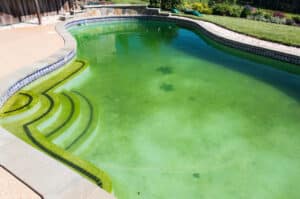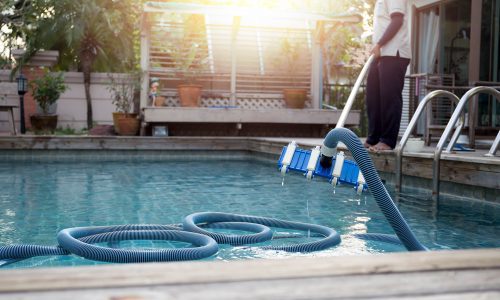Pool maintenance is one of those things that gets pushed to the back burner pretty often. When we think about it, we don’t like to dwell on it for too long because we kinda want to forget that chorines and other pool chemicals are floating around in there. But if you are currently enjoying your summer by hitting the pool every day, you should be aware of a very real danger – pool stains.
Did you know that pool stains can be dangerous? It may surprise you but more dangers are lurking around your swimming pool. We’ll find out what they are in this article and how you can protect yourself against them.
Pool stains are more than just a cosmetic problem. They can be dangerous to your health and the health of your family.
The most common cause of pool stains is algae. Algae forms when there is too much organic matter in the pool, like leaves or dead skin cells. It can also be caused by phosphates coming from detergents or other cleaning products used in your pool.
Algae can grow rapidly and is often green or dark brown. It can look like clumps on the surface of the water and may even smell like fertilizer or rotten eggs if it’s allowed to grow for an extended period.
The longer algae grow in your pool, the more dangerous it becomes because it releases toxins into the water that can make you sick if ingested or absorbed through your skin. These toxins may cause symptoms such as nausea, headache, vomiting, and diarrhea—all of which are unpleasant enough on their own—but they can also cause long-term damage to your body including liver damage and cancer.
Pool stains can be a headache, but they’re not impossible to get rid of. If you’re willing to put in some elbow grease, you can make your pool look like the day it was built.
Pool stains are a big problem for pool owners, but they don’t need to be. Here are some of the most common types of pool stains and how to identify them:
Algae: Algae can cause cloudy water and is sometimes mistaken for dirt or sediment. It’s more like a plant than anything else—you’ll see it growing in your pool if you don’t take care of it.
Rust: Rust is caused by iron and copper in water, which oxidizes when combined with chlorine. This can make your water turn brownish-red or orange, which is bad news for anyone who likes clear pools!
Mold: Mold doesn’t just look gross—it’s also dangerous! If there’s mold in your pool, it can cause respiratory problems and other health issues for people who swim there regularly.
Pool Stains can be very dangerous for your health and the overall appearance of your pool. If you have a lack of time, knowledge, or interest in cleaning your swimming pool, don’t worry, this article was written with you in mind. Professional pool maintenance is necessary to keep your pool clean, and safe and to make it look great. By using a local service like Truly Blue Pool to make sure your pool is being professionally maintained you will save money in the long run. Contact us to learn more!





13 Replies to “The Dangers of Pool Stains”
discount androxal low cost
androxal saturday delivery cod
purchase enclomiphene usa buying
buying enclomiphene low cost
buying rifaximin cheap prices
buying rifaximin cheap from india
how to buy xifaxan cheap generic uk
buy cheap xifaxan generic online canada
ordering staxyn without prescriptions canada
buying staxyn cheap europe
avodart best prices
order avodart generic overnight delivery
get dutasteride generic dosage
how to order dutasteride buy singapore
online order flexeril cyclobenzaprine price canada
order flexeril cyclobenzaprine cheap prescription
cheap gabapentin cheap buy online no prescription
gabapentin online order no prescription
acheter kamagra prescrire united nations medicament
acheter kamagra pharmacie en spain
buy cheap fildena canada drugs
get fildena singapore where to buy
pharmacie-fr itraconazole
ordering itraconazole uk buy online
koupit kamagra levné
kamagra online předpis